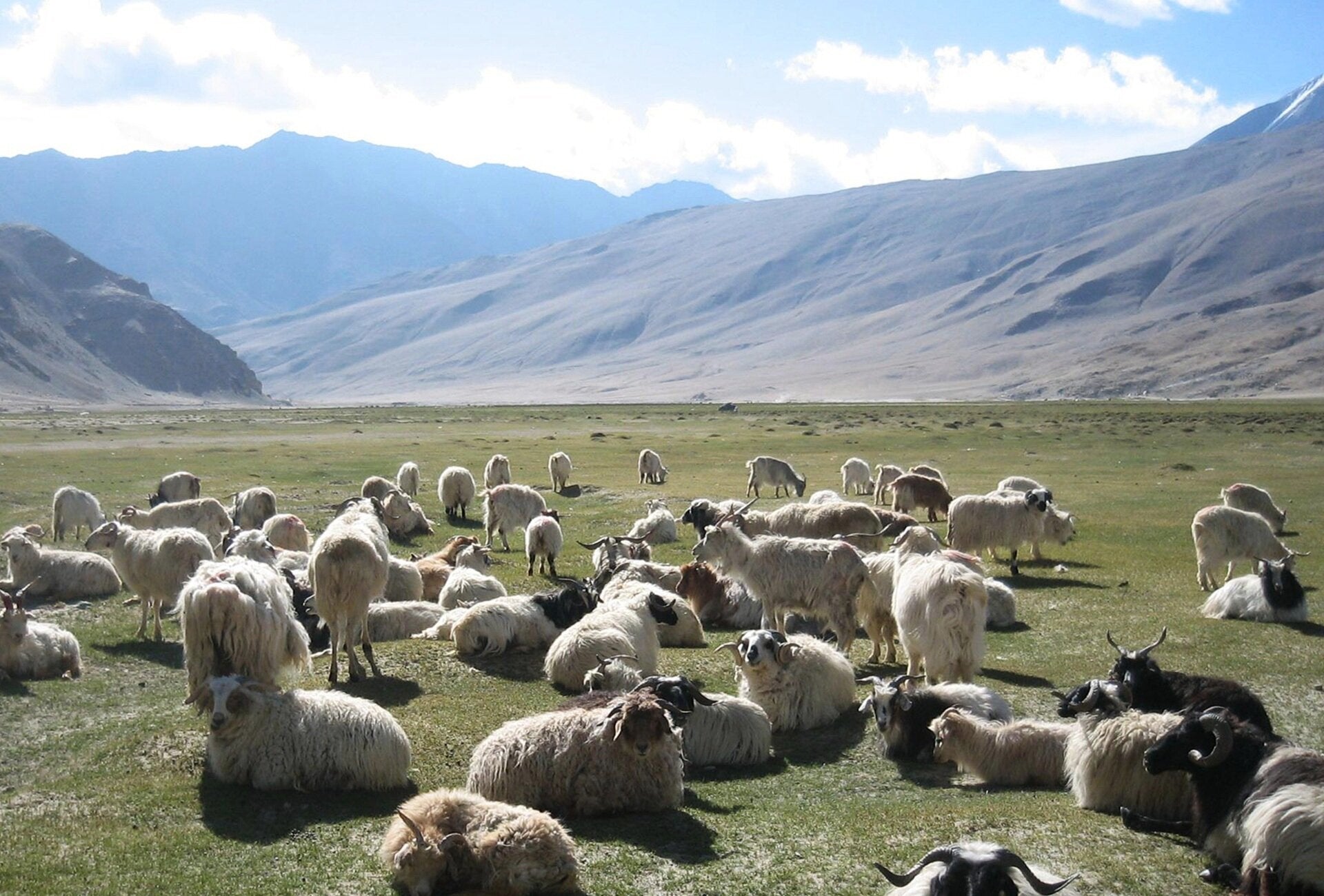Where does cashmere come from?
Cashmere production is said to have originated in the Kashmir region. Nowadays, cashmere still comes from Asia, where it’s produced before being sent West.
How is it made?
Cashmere comes from goats. There is one nomadic breed that produces the fine hair everyone desires. This breed is found between Mongolia, Southwest China, Iran, Tibet, Northern India and Afghanistan. These goats have very little fat to protect them in the winter from the cold arid plains; so they developed soft, fleecy fibres underneath their coat on their underbellies as a layer of insulation. These hairs are what make exceptional cashmere.
Is cashmere cruel?
Cashmere wool is a very luxurious product and like many other rare and precious materials only few still have the ancestral and non-industrialized knowledge required to craft it. Because of the rarity and low yield of the material it takes four goats to produce enough hair to make one sweater.
These days because of fast fashion it is becoming easier to find competitive prices. Goats are the ones paying the price of cheap production. The most popular practice is to shear them and take all of their protective hair. As they have very little fat, shearing them too early means it is likely they will freeze to death.
The increase in demand for cashmere and the pressure to lower cost means herders now need more goats to produce a large amount of material. More goats is more mouths to feed which turns into overpopulation that ends up killing the region. These lands that were once green and un-spoilt are quickly becoming barren.
The only thing that makes cashmere cruel is fast fashion and the methods used to acquire and produce it.
What makes our cashmere cruelty free?
All businesses have a social and ethical responsibility and ours is to make sure no animals, humans, and habitats are abused, exploited or harmed during the making of our cashmere sweaters. We are committed to stringent, ethical standards and work with trusted collaborators.
To produce cashmere wool, we harvest the finest fibre: the goat’s undercoat. In spring, our partner shepherds harvest these fibres with an ancestral method: they run a comb through each animal's coat, by hand; leaving them still with their hair and collecting only what sheds. Harvesting in the spring ensures that the goats keep their layer of warmth during the winter so that they don’t suffer or freeze to death.
Each goat can provide up to 250 grams (approximately 8 oz) of raw cashmere wool, which will be spun and woven afterwards to become a knit. The Casa blanket requires about four years of harvest on a single goat : a long but necessary process in order to guarantee proper traceability and respectful and caring conditions for workers and animals.
Once harvested, cashmere fibres arrive in Italy, in a family-run spinning mill located on the slopes of Mount Petrano that specialises in carding and combing wool threads. Linnea Lund labels are sewn on garments by hand then sent to to our workshop in Paris where we pack it for you.
* Our Cashmere yarns are produced in a location with the following certifications:
Responsible Wool Standard
Organic Content Standard
100% Renewable Energy
ZQ
Health and Textile
Environmental and Health and Safety Standards
If you have any questions or requests concerning our cashmere, email me at bianca@linnealund.com. I remain at your disposal!



